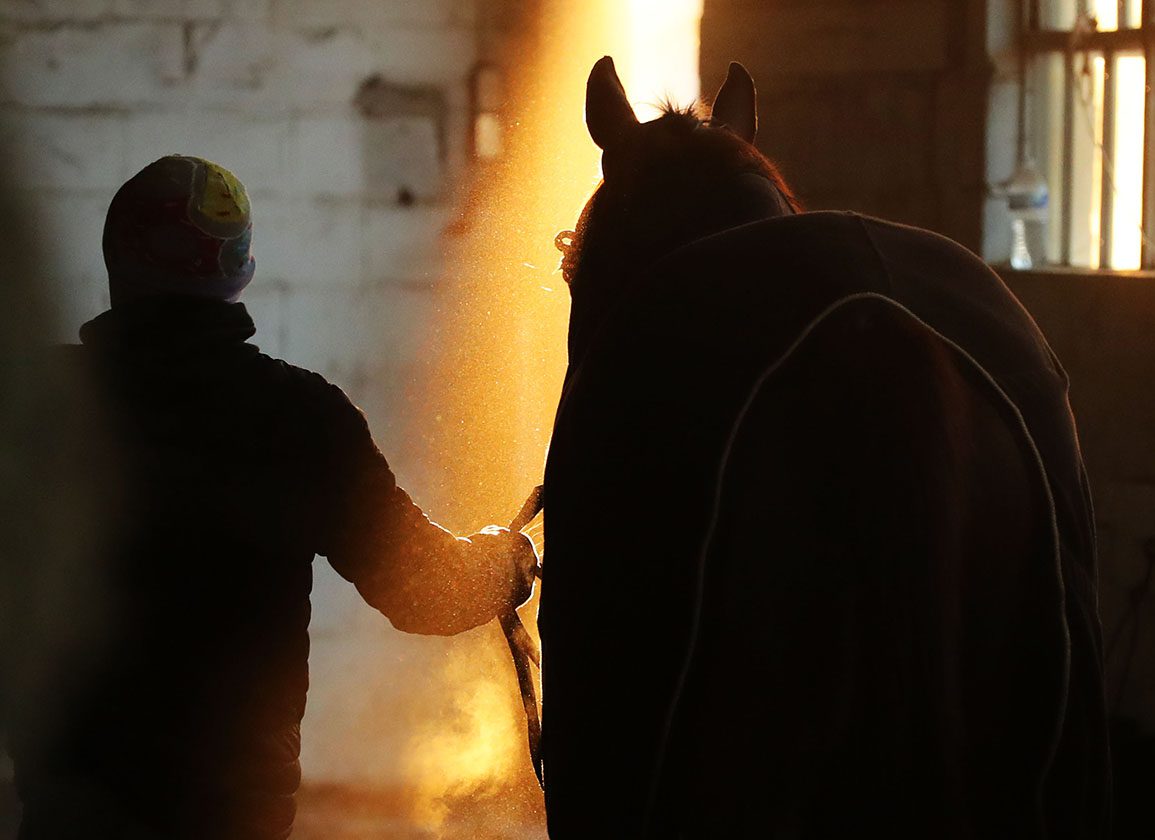By T. D. Thornton
In the wake of news that seven racehorses at properties under the jurisdiction of the California Horse Racing Board (CHRB) died in March, several commissioners and staffers at Thursday's monthly board meeting raised the verbal equivalent of a yellow flag with the goal of preventing future fatalities that would equate to a spike into red-alert territory.
“Our injury rate, death rate, is creeping up,” chairman Gregory Ferraro, DVM, said after CHRB equine medical director Jeff Blea gave the statistics in his report. “Do you have any solutions, reasons, comments about that?” he asked.
“Solutions, no. Reasons, each one is unique,” Blea replied.
“For example, in March, there were two tibias, one shoulder in a Quarter Horse, and two fetlocks,” Blea said, describing the underlying fatality reasons and settings in four musculoskeletal injuries that occurred in training and one in racing.
Blea said the other two deaths were “medical-condition fatalities unrelated to exercise.”
Blea continued: “When I look at the necropsy reports and when I'm involved in the post-mortems, each one is unique. Solutions, I think what we need to continue doing is what we've been doing. We need to continue the educational point of the welfare, the racing and safety program that the CHRB established, trainer [continuing education]. We need to continue the education through the post-mortem examination reviews. And we need to continue to get that message out.
“We need to continue to remind our stakeholders not to get complacent,” Blea said. “It's easy to get complacent. Right now is a difficult time for not only the industry but specifically in California. I think the horsemen feel it, management feels it, everyone feels it. So I think it's [important] to continue to do what we've been doing, and continue to do it better than we've been doing it.
“There's been some discussion in some circles about penalties for fatalities,” Blea said. “I think that is recirculated conversation from a few years ago. That is going to take quite a bit of in-depth discussion and understanding as to how that sort of process would work.
“In other words, if you have more than one fatality, two fatalities, three fatalities [you'd face penalization],” Blea said. “Some folks have brought that notion back up, but I think horsemen are keenly aware that the last thing they want is a fatality. But I think in order to help reduce those numbers, we just have to keep our foot on the pedal.”
Ferraro then wanted to know how many trainers might have had more than one musculoskeletal fatality in their stables over a 12-month period.
Scott Chaney, the CHRB's executive director, didn't have the exact figures in front of him, but off the top of his head, he said that based on the last annual report the CHRB put out, he believed that of around 66 fatalities statewide, “in the neighborhood of 10 trainers that had more than one.”
Chaney clarified that, “So the vast majority obviously have [just] one. And then I think there was maybe one trainer with four, one with three, and a handful with two.”
CHRB vice chair Oscar Gonzales said it was important for the board to remain vigilant about keeping an eye on horses training and racing off of extended layoffs, and he added that he knows that oversight in general can be difficult at a time when the industry is short on veterinarians.
Chaney agreed that the layoff horses deserve the extra scrutiny they get from the CHRB.
“Those [injuries] are particularly troublesome, because they are preventable,” Chaney said, noting the CHRB's required extra examinations for horses coming off a layoff.
Widening the lens further, Chaney added, “The sudden death ones, I still think we're still trying to get our arms around. But large-bone injuries we can prevent.”
Gonzales summed up the discussion by reminding stakeholders “The last thing we need are more rules and regs, or even for the state legislature to act in the instance where they feel not enough has been done.”
Blea put it this way: “The success of the regulations is in the silence of it. It's there-you just don't hear or see it. Which, quite frankly, I'm glad we don't hear it or see it, because the goal is to reduce those numbers. But the success is there.”
Not a subscriber? Click here to sign up for the daily PDF or alerts.






